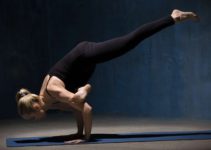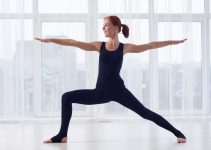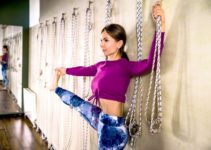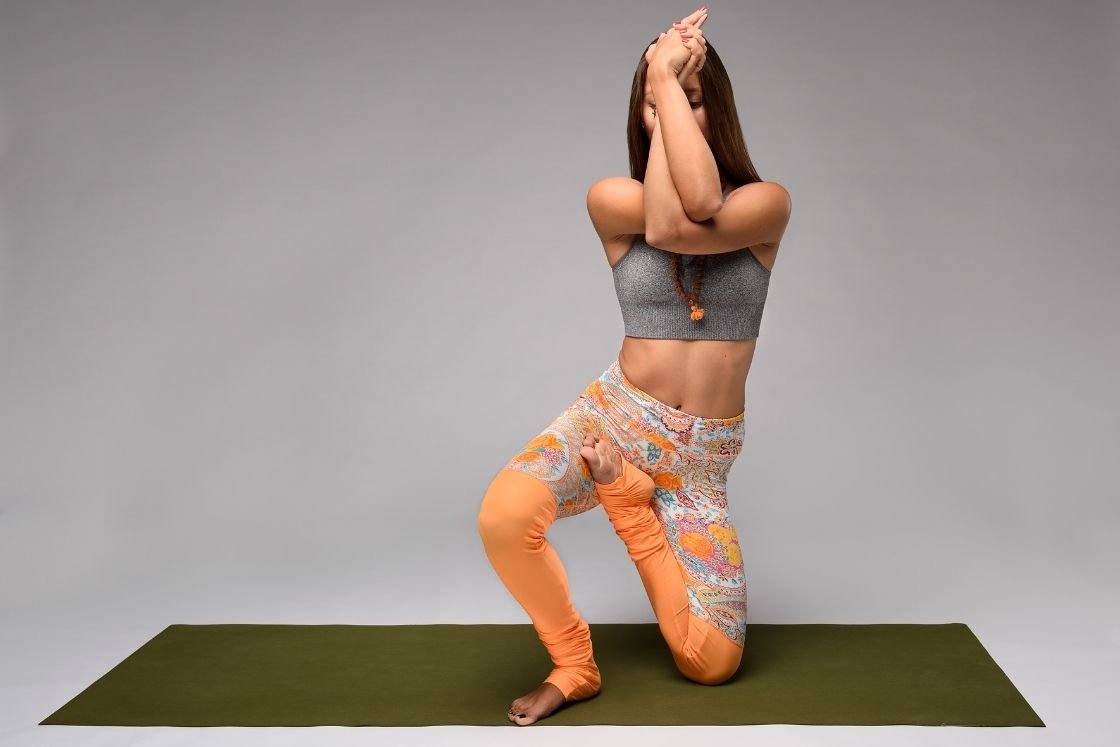
Vatayanasna, a classical Ashtanga Yoga series pose, in appearance looks a combination of Garudasana (eagle pose) and Ardha Padmasana (half lotus pose). It’s a balancing posture that targets especially quads, glutes, and inner thighs muscles.
It is also known with the name of flying horse pose or horse face pose.
The pose demands a considerable amount of flexibility already inculcated in the body. Thus, based on the difficulty it is an intermediate yoga posture.
Vatayanasana Meaning
Vatayana is called to ‘horse’ in Sanskrit and asana means pose.
Alternatively, in Sanskrit, ‘vata’ refers to air and ‘yana’ is a ‘vehicle.’ However, here in the pose the term ‘vatayana’ means ‘flying horse’. Therefore, sometimes it is also referred to as the flying horse pose.
The body limbs make a shape like a horse in Vatayanasana. If you observe the horse pose with detail, you will found;
- The folded knee in half lotus (balancing knee) looks like a horse nose, and
- The wrapped arms, head, and chest area make a shape like a horse’s upper half.
The whole figure of the pose makes a shape like a horse face; a horse who is about to fly.
The horse pose is all about balancing the body on a folded knee and one foot. This creates pressure on the thigh, knee, and ankle. Therefore, it provides strength to leg muscles and knee joints.
Vatayanasana Practice Guide
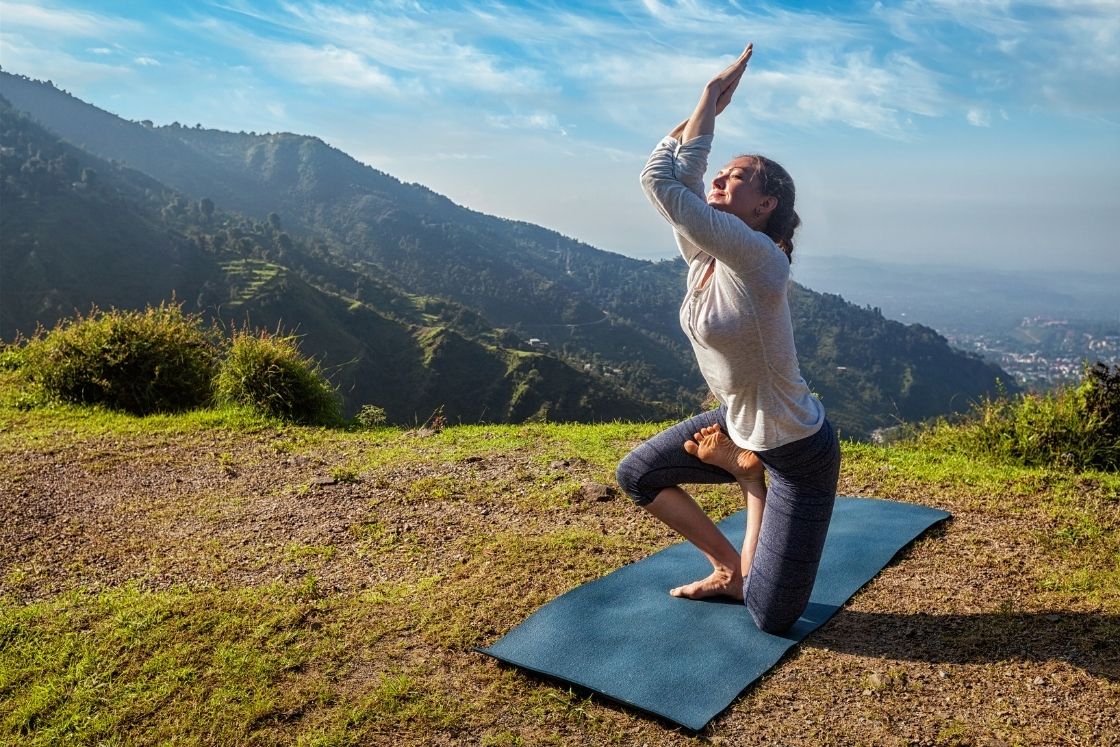
Yoga master B.K.S Iyengar detailed the horse pose in his book “Light on Yoga”. According to him;
In the beginning, it will be difficult to balance and the knees will be painful. With practice, the pain disappears and the balance is achieved.
Light on Yoga
Go through below points before you begin the horse pose for safe and easy practice.
Contraindications
- Avoid practicing vatayanasana in pregnancy, sciatica, or slip disc.
- Do not perform it with an injured knee, hip, or ankle.
- People suffering from fro hernia should not practice it as it might increase the pain.
Preparatory poses
- Lotus Pose (Padmasana)
- Seated Forward Bend Pose (Paschimottanasana)
- Child’s Pose (Balasana)
- Lizard’s Pose (Utthan Prishtasana)
- Half Lotus Seated Forward Bend (Ardha Baddha Padma Paschimottanasana)
How to Do Vatayanasana (Steps)
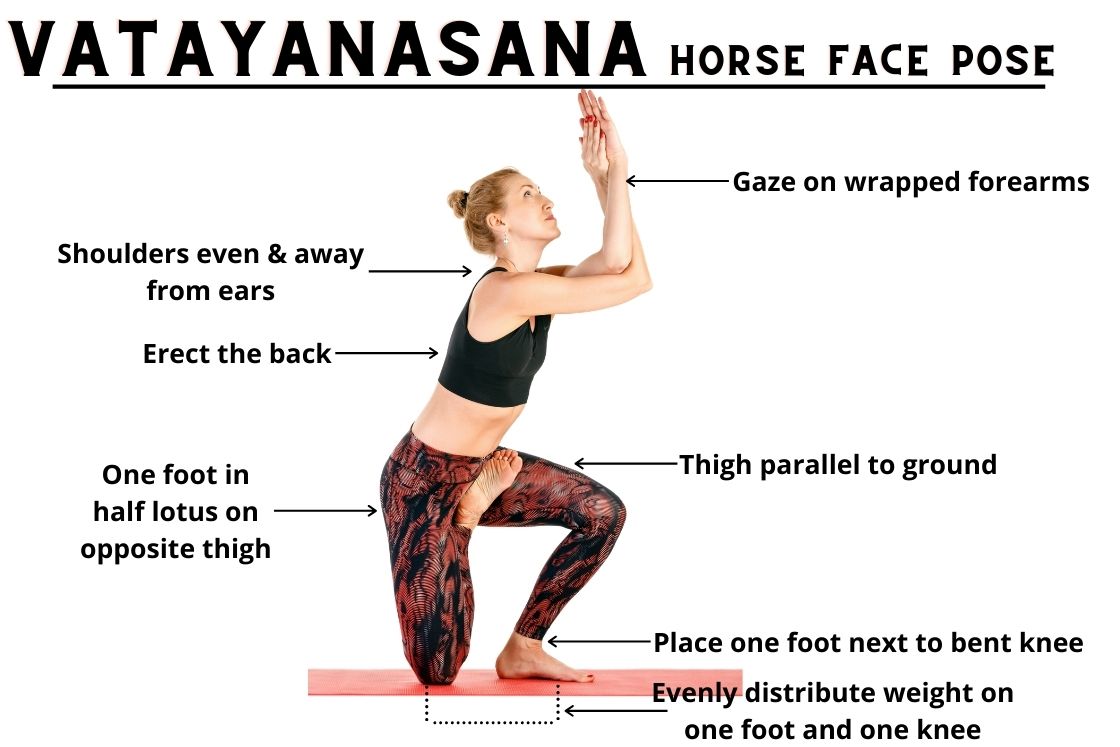
- Sit on the floor placing the left foot on the right thigh close to the hip crease, i.e. half padmasana.
- Keep your hands by the sides placing the palms on the floor.
- Exhale lifting your torso off the floor.
- Touch the externally rotated left knee on the floor.
- Bring the right foot forward and place the right heel near the left knee. Ensure to keep the right thigh parallel to the floor.
- Inhale, straighten your back, stretching the pelvis forward, and lift your hands to the chest level.
- Bend the elbows and cross them in a way that the right elbow lies in the crook of the left i.e. eagle pose like wrapped hands.
- Now, entwine the forearms and join the palms together.
- Hold the pose for 30 seconds and keep breathing.
- Release the arms and sit on the floor straightening the legs.
Repeat the pose by switching the position of the foot and the entangled arms.
Precautions
- Perform the asana with proper alignment and correct posture.
- Keep the hips aligned and drawn under you by compressing the sacroiliac joint.
- Perform it under expert supervision.
- Perform it with the help of a partner to ease the pose and to get extra support initially.
Follow up poses
- Eagle Pose (Garudasana)
- Half Bound Lotus Standing Forward Bend (Ardha Baddha Padmottanasana)
Modifications and Props
Beginners who are not able to find balance in horse face pose can modify pose using props in the below modifications.
- Using a chair- Performing vatayanasana with a chair modifies the pose a little bit. Place a chair in front of you around six inches away.
- Stand in both of your knees and put one hand on the chair’s seat. Use the other hand to hold the respective foot and draw it upwards to reach the thigh. Once you find the balance, raise your hand from the chair and extend it towards the ceiling.
- Placing folded blanket under knee – Before you bend leg in half lotus pose, adjust a blanket under the knee to comfortably hold and balance pose.
- Perform it with the help of a partner to ease the pose and to get extra support initially.
Variations
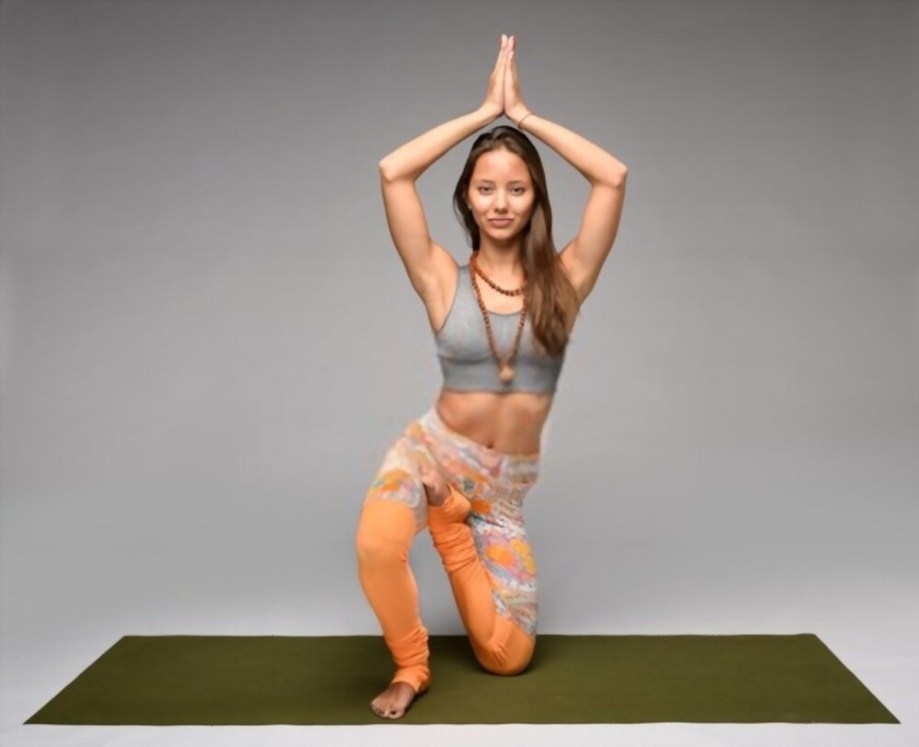
- Perform vatayanasana by not involving the entangling of the arms. Simply, put the hands in the prayer pose and stand on one foot and one knee.
- In this variation, instead of bringing one heel to the other thigh take it to the back. Then take your same hand to the back and hold the big toe. The other foot lies on the floor with a parallel thigh.
- Parivrtta Vatayanasana – In this variation, vatayanasana is performed with the hands joined in prayer pose. Then the upper body is revolved towards the standing foot with the elbow of alternative hand resting on its thigh. However, the outer elbow projects upwards with the palms pressing each other.
Vatayanasana Benefits
1. Enhances flexibility
It releases the trapped tension from the muscles with regular practice. The stretches involved in the pose are advanced and provides extra flexibility to the muscles.
2. Strengthens muscles and bones
It increases the endurance and stability of bone and muscles. It eventually makes the bones and muscles stronger.
3. Improves blood circulation
The asana improves the blood circulation of the lower body. Especially it facilitates the proper flow of blood through the hip region.
4. Therapeutic action
The moves involved in the pose helps in getting rid f any stiffness in the body and relieves joint pains. Thus, vatayanasana has a therapeutic action on arthritis.
5. Improves posture
The pose is focused on the lower body. Especially the hips and legs are deeply involved in the pose. Regular practice of vatayanasana can even improve minor asymmetry in the hips and legs. It brings the correct posture of the body.
6. Enhances balance and concentration
Vatayansana helps improve concentration power. It requires a firm grip of balance and while balancing the body in one foot and one knee, the concentration power enhances.
According to research, it is proved that vatayanasa provides an improved sense of balance and concentration [efn_note] Bharatnatyam and yoga http://icyer.com/documents/29.pdf [/efn_note] to the practitioner.
Conclusion
Vatayanasana strengthens, improves, and cures the body. Its various benefits proves the potential of this asana. With proper practice and procedure any one take advantage from it.
